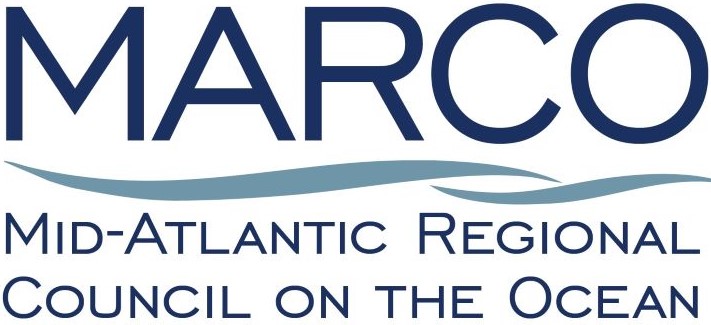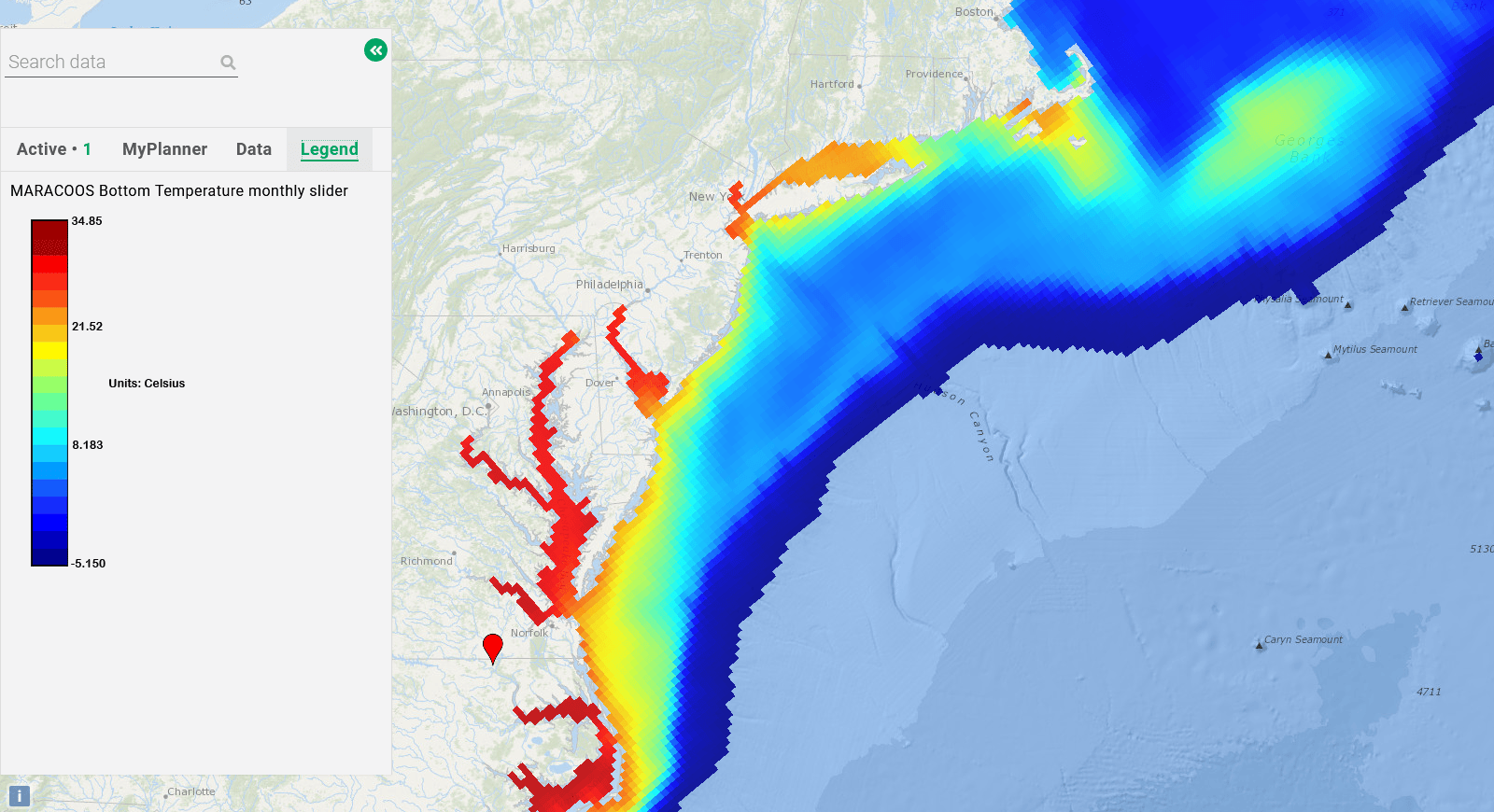Maritime industries, government agencies, researchers and members of the public will have access to improved oceanographic data through a memorandum of understanding (MOU) signed between the Mid-Atlantic Regional Association Coastal Ocean Observing System (MARACOOS) and Mid-Atlantic Regional Council on the Ocean (MARCO).
The MOU formalizes a long-standing partnership between the region’s two leading ocean data sharing, mapping, and planning organizations: MARACOOS, which offers real-time information on ocean and meteorological conditions through its OceansMap, and MARCO, which offers map products that support long-term regional ocean planning through its Mid-Atlantic Ocean Data Portal. It also commits MARACOOS and MARCO to continue co-coordinating the Mid-Atlantic Coastal Acidification Network (MACAN), a consortium of public and private sector scientists and industry representatives that is exploring the implications of increasing acid levels in the region’s ocean waters and estuaries and what steps communities and industries can take to prepare and adapt.
The OceansMap (oceansmap.maracoos.org) and Portal (portal.midatlanticocean.org) are free and publicly accessible GIS mapping tools focused on ocean areas and estuaries from Cape Cod to Cape Hatteras. Users can consult the OceansMap around the clock for the latest observations and predictions for wind speeds, wave heights, water temperatures, currents and more. The Portal contains over 5,000 interactive map maps depicting offshore wind areas, commercial fishing grounds, shipping traffic concentrations, marine life habitats and more.
MARACOOS and MARCO often team to produce oceanographic map products to accommodate the needs of stakeholders by leveraging the complementary functions of these mapping tools. For example, the Portal team and MARACOOS yesterday published a series of maps that model typical sea bottom temperatures for each month of the year and depict the approximate location of the “cold pool,” a band of cool water found off the Mid-Atlantic coast in the spring through fall that is critical for marine life and fisheries. The maps were created by averaging 13 years of daily model-based data analysis into 12 monthly maps that users can automatically animate or toggle through manually.
The Portal has also published a series of map layers showing average surface currents by season based on hourly measurements collected by MARACOOS’s Mid-Atlantic High Frequency Radar (HFR) Network from 2007-16. Finally, a year earlier, the organizations partnered to create a dozen maps depicting average monthly sea surface temperatures based on 15 years of recent data.
“We’ve seen a surge in traffic to the Portal over the last two years, driven in part by the demand for information related to the advance of offshore wind projects off the Mid-Atlantic coast,” said Delaware Department of Natural Resources and Environmental Control Coastal Section Administrator and MARCO Chair Kimberly Cole. “Our users have shared their interest in seeing more robust oceanographic data to assist their work on the Portal, and there is no better source for that in our region than MARACOOS.”
“The agreement will ensure MARACOOS and MARCO’s data development plans are more closely aligned and better positioned to meet the needs of stakeholders,” said MARACOOS Executive Director Gerhard Kuska. “The success of the products we’ve already created have us excited for what’s possible in the years ahead.”
The MOU also calls for expanded collaboration in the organizations’ respective Leadership Board and work groups’ activities, public outreach and communications, and the development of joint proposals and special projects.


